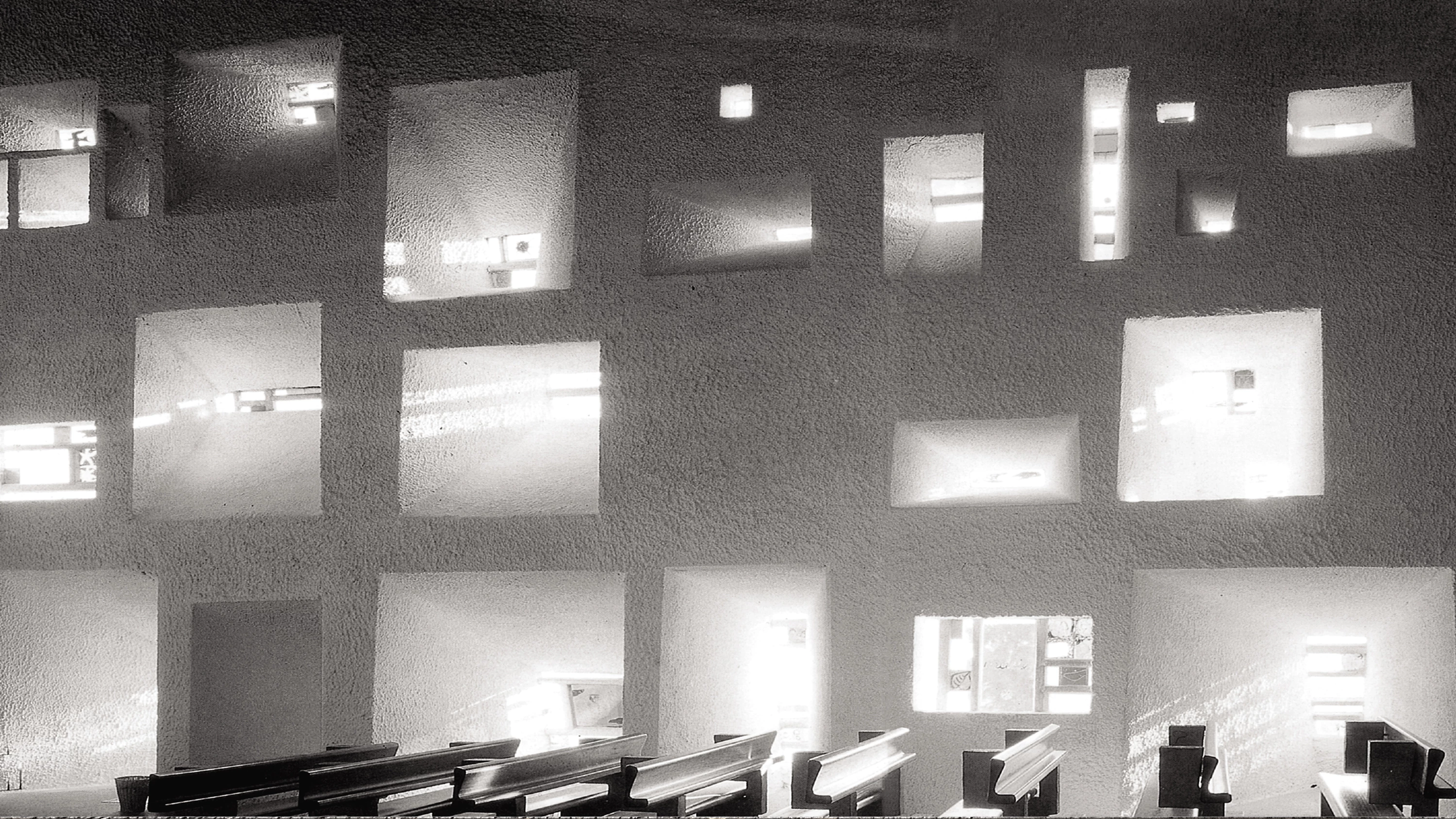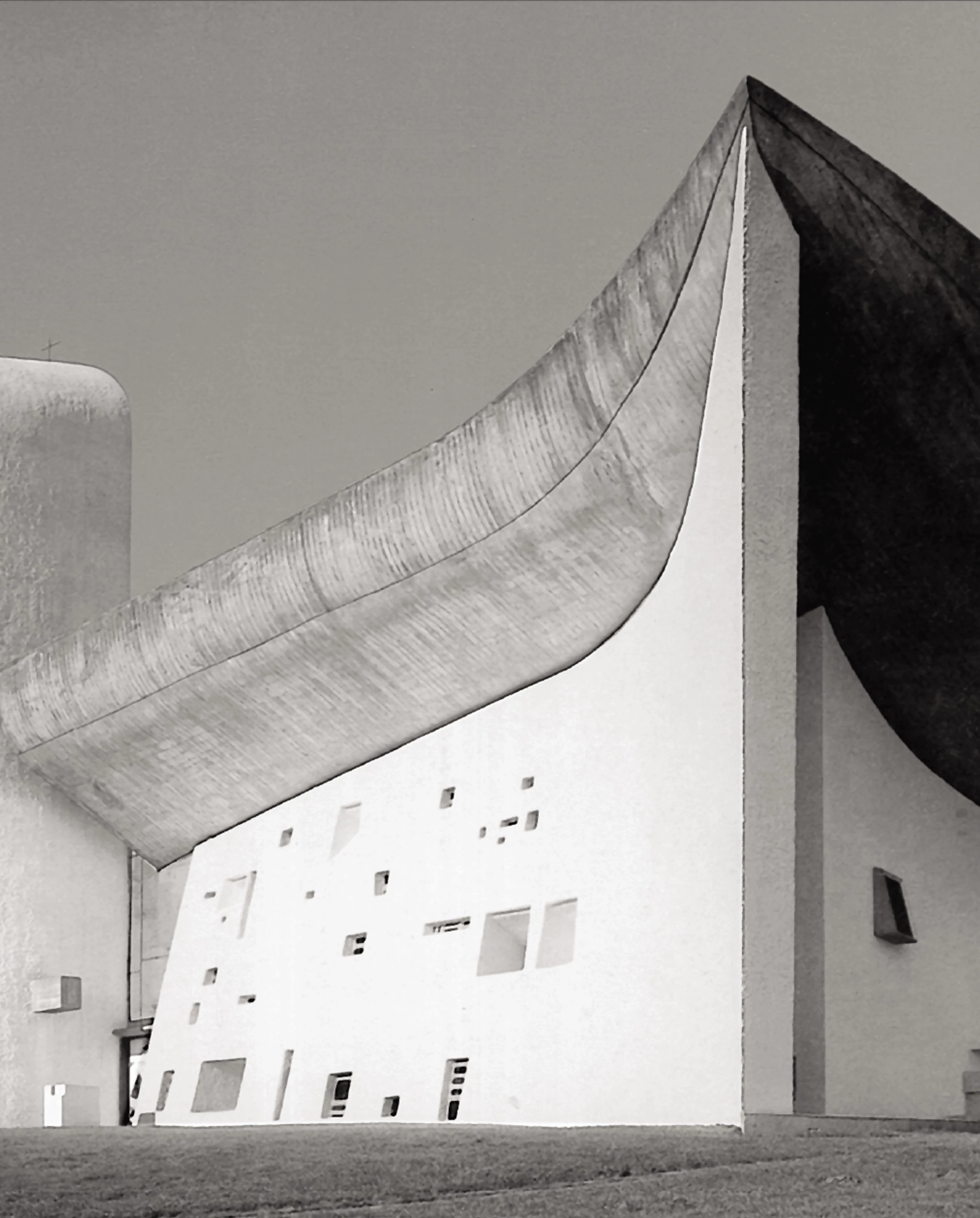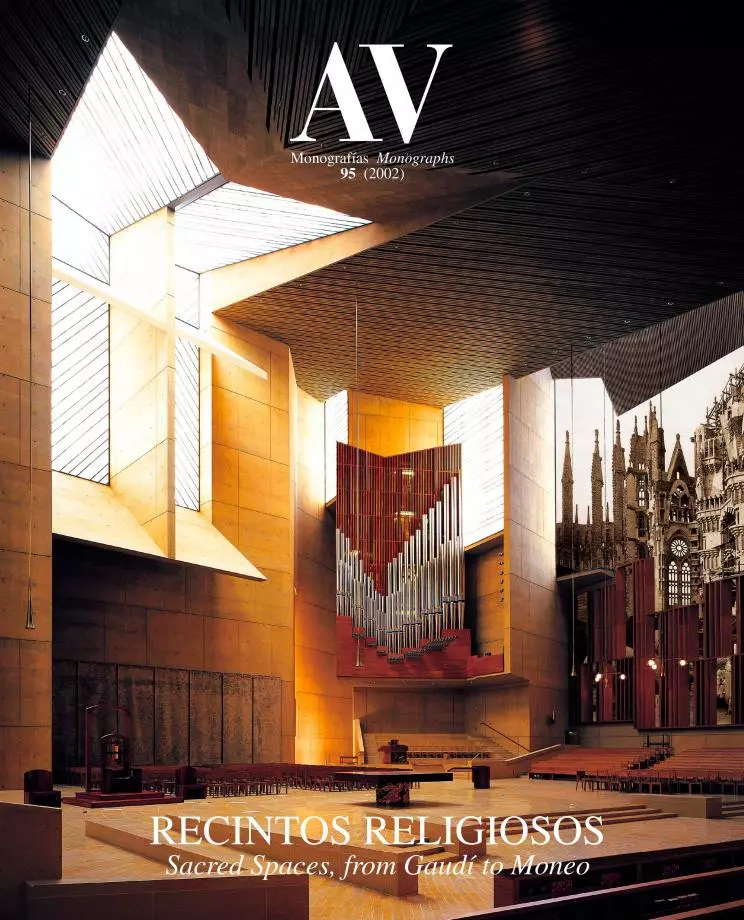Notre-Dame-du-Haut, Ronchamp
Le Corbusier- Type Religious / Memorial Place of worship
- Material Concrete
- Date 1950 - 1954
- City Ronchamp
- Country France
- Photograph Deidi Von Schaewen


At the end of the fifties, the friendship between Le Corbusier and an important Dominican whose name rhymed with his own, Father Le Couturier, earned him the commission to build two religious projects bound to become exponents of contemporary architecture. For Le Corbusier, religious commissions entailed no professional nor moral challenge; within his amazing interpretive capacity, any program or motif inspired ideas and projects, because within his idea of modernity any building was possible. The first one of them, the convent of La Tourette, constituted a complex project where he was able to develop the intuitions of landscape, history and construction, so personal and dear to the him. With his particular vanity, he did not hesitate to speak on behalf of the monks when he said: “Ce protestant a réussi la plus belle église catholique du siècle!” (this Protestant has managed to build the most beautiful Catholic church of the century). But in both cases, it was the Dominican who provided spirituality. Le Corbusier showed little concern for the sanctity of space, but rather in expressing his formal intuition. More than to religious arguments, the symbols used by the Swiss master make reference to modernity and to architecture itself as an act of reinterpretation.
The idea of reconstructing a chapel of the Virgin by the Swiss frontier went back to the postwar years, when there was a yearning for faith and expiation, for procession and religious fervor. But the project of Ronchamp proceeds at the same time from the aesthetic trials of scultpures (executed with Savina), the recent discoveries of La Tourette and a growing freedom. This is proven by the thick wall that houses openings as authentic spaces, and that halts before touching the roof in order to let a low light in; or the layout of the floor plan, of such a special security that it has the appearance of an ideogram or a paleolithic painting, but which accepts the organization of an invisible structure. Certainly, the chapel is a theme that has given more famous pieces of work to modern architecture than the church. Free from large liturgical servitudes, it is closer to the modern ideal of the project conceived as a creation that expresses itself on its own terms and that is solved by its own rules. In the case of Ronchamp, the concise commission of the chapel leads to an unprecedented celebration of architecture on its own terms, endowing the building with a sculptural strength that is evident in the continuous tension affecting the large structures that form the roof and also the smaller components...[+]







